There are so many different drills out there, that it can be hard to know which ones to use to help your team to improve.

With this in mind, I wanted to put together a variety of passing drills that I think will benefit your team, whether you coach young kids, older youth players, or adults.
Typically, the benefit of team passing drills will help players improve the following:
- Passing technique
- Control
- Focus
- Tactical movements
- Communication
All of these elements will improve a player’s individual game as well as the team’s overall cohesion and performance.
In this blog post, we will look at how soccer passing drills improve the aforementioned qualities and look at several passing drills that you can use with your team.
HOW DO TEAM PASSING DRILLS IMPROVE: PASSING TECHNIQUE
One of the biggest benefits of practising team passing drills is that players will improve the elements of the passing technique, in a more dynamic environment.
This is because soccer passing drills give players countless opportunities to pass the ball, without pressure from any opposition but, at the same time, in a situation that has the potential to mimic a game situation.
A variety of passes can be suggested to use at various points of the passing cycle, such as:
- One-touch pass
- Short / medium / long pass
- Use the outside of the foot
- Use the inside of the foot
For example.
With the players are constantly passing the ball, their passing accuracy will eventually be more consistent due to the good technique being developed.
Other technical aspects of passing that may be improved is the understanding of the weight of pass needed for multiple scenarios, whilst it is important to also encourage players, especially younger players, to use their weaker foot.
This can be done by making it obligatory to use a particular foot, left or right, for a certain period of time.
HOW DO TEAM PASSING DRILLS IMPROVE: CONTROL
In addition to having good passing technique, a player must also have good control of the ball.
An individual who possesses a good first touch will be able to:
- Receive a pass in a tight situation
- Turn and face the opposition goal quickly
- Gain extra time on the ball
HOW DO TEAM PASSING DRILLS IMPROVE: FOCUS
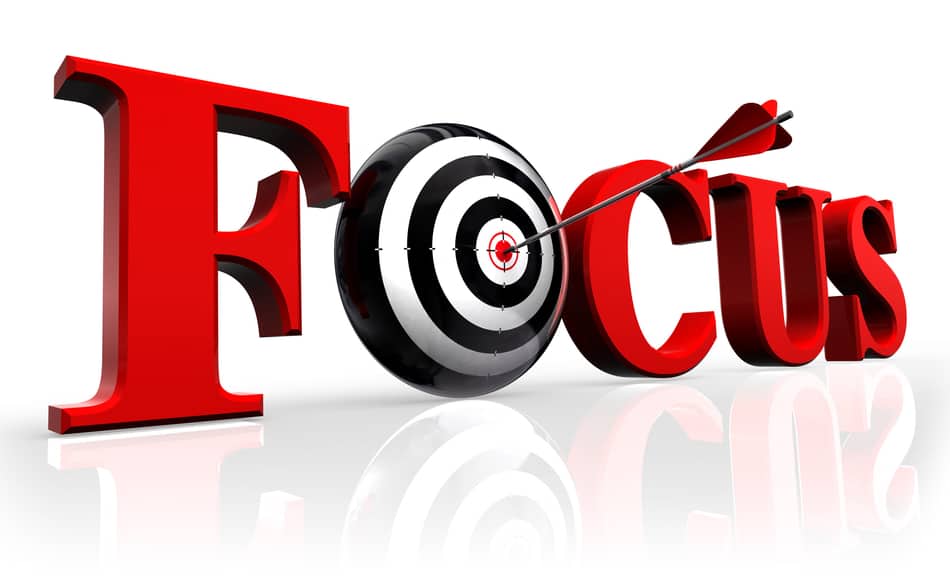
As a coach, you will be well aware that, in order to perform at their best, players need to be focused.
Players who are focused will:
- Pay attention to the play and their teammates
- Stay calm under pressure
- Make good decisions on and off the ball
HOW DO TEAM PASSING DRILLS IMPROVE: TACTICAL MOVEMENTS
For a team’s passing game to be effective, the players need to make good tactical decisions.
This is why, as mentioned earlier, the focus is so important.
The players need to be constantly analysing the game situation, with and without the ball, to be able to make good tactical decisions.
Those tactical decisions may include:
- Create space for themselves and others
- Make diagonal runs
- Make overlapping runs
- Support the player in possession
- Weight of pass
HOW DO TEAM PASSING DRILLS IMPROVE: COMMUNICATION
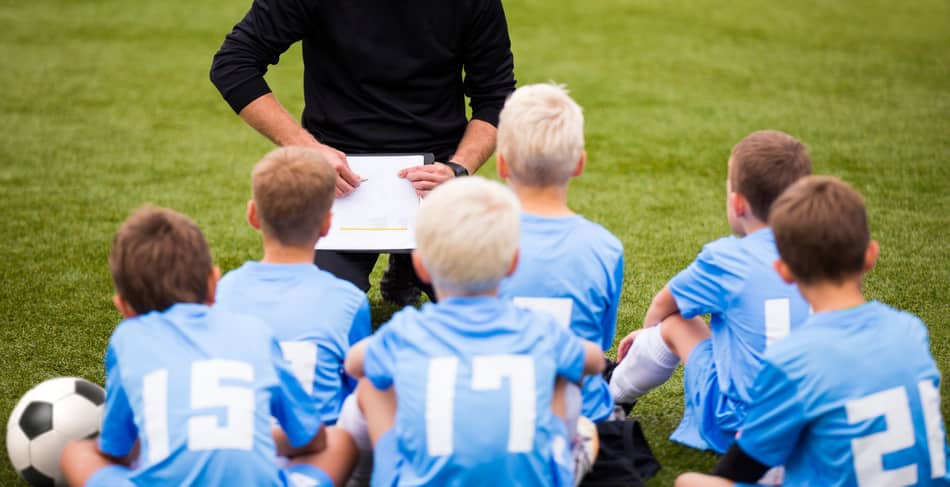
As with any team sport, good communication is essential for a team’s success.
Passing drills permit players to practice their communication skills as it requires several messages to be relayed between teammates so that the team can maintain possession.
These massages are:
- The receiving player calling for the ball
- The player making the pass gives information to the player receiving the ball (time, turn, man on, etc …)
- Receiving player points as to where they want the ball
HOW DO TEAM PASSING DRILLS IMPROVE: TEAM COHESION
When a team is practising passing drills together, they are working on their cohesiveness.
This means that the players are learning how to play together and develop an understanding of each other’s movements.
The better the team’s cohesion, the more effective their passing game will be and their ability to:
- Create more passing options
- Create gaps or spaces for teammates
- Maintain possession
So, without further ado, let’s take a look at some of the best team passing drills you can use with your team!
DRILL #1
Set-up:
Place four poles or cones as seen in the image below, with a flat disc at either end placed central to the poles but some distance further back.
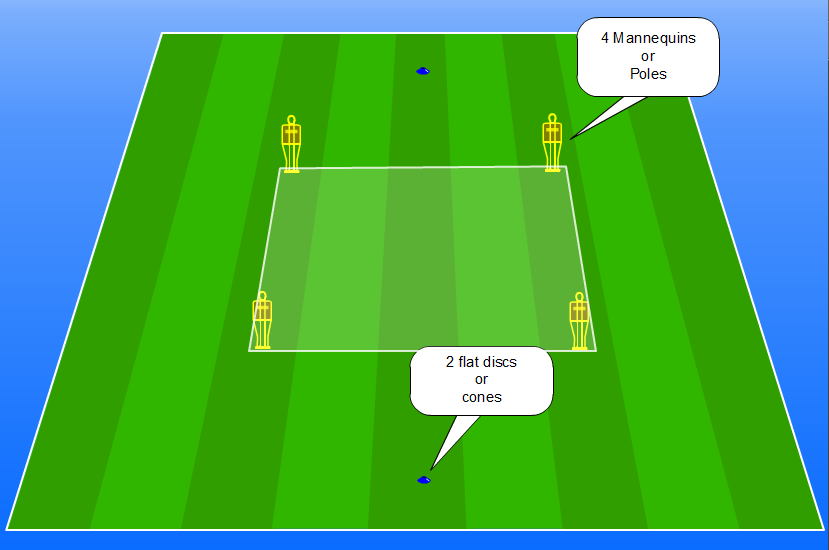
The distances of the poles or cones will depend on the age and ability of your players.
Description:
- Player Nº 2 moves away from his marker (the pole) and calls for the ball.
- Player Nº 1 makes the first pass which is a bounce pass between N 1 and Nº 2.
- as Nº 1 is receiving the ball, player Nº 3 also steps away from their marker and anticipates the next pass.
- Nº 1 passes the ball to Nº 3 which is the signal for player Nº 2 to go and support player Nº 3.
- Nº 3 passes to Nº 2 with his or her first touch and Nº 2 will then pass the ball to player Nº 4.
- The Passing cycle is repeated but o the opposite side, Nº 4 being the first player.
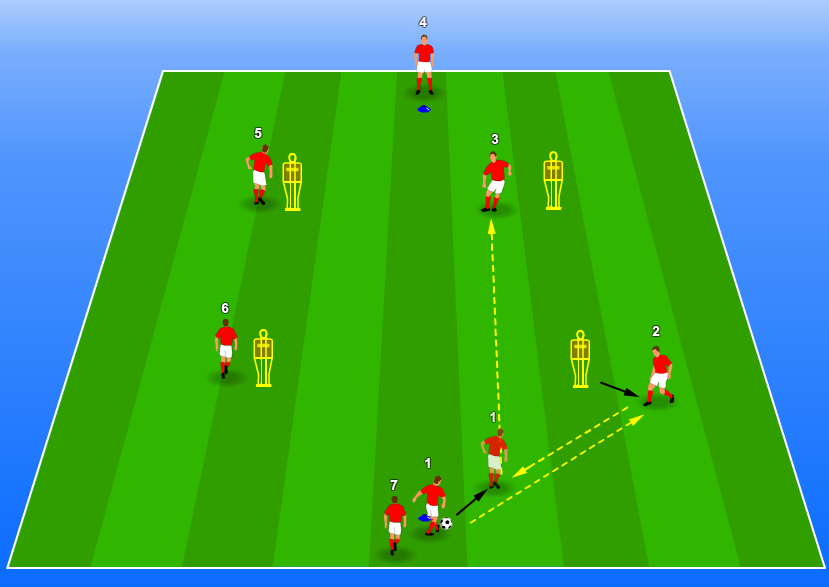
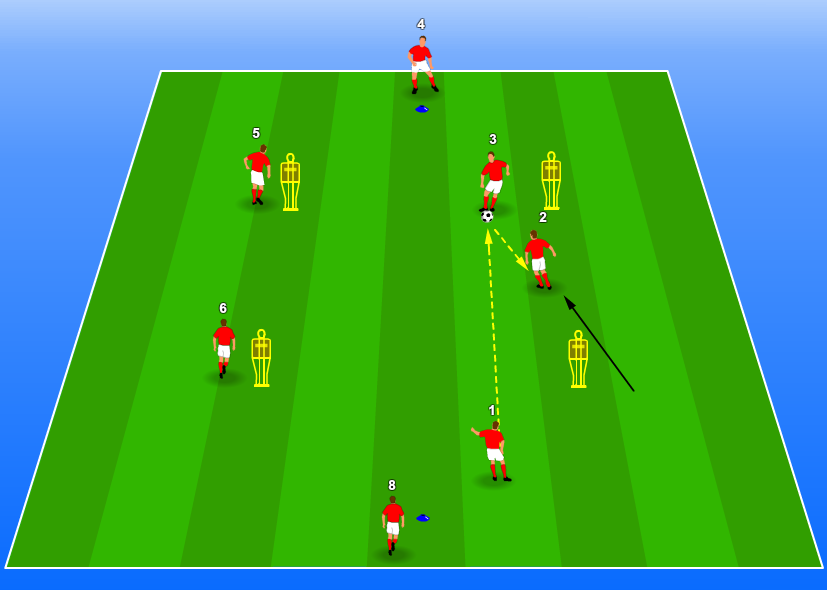
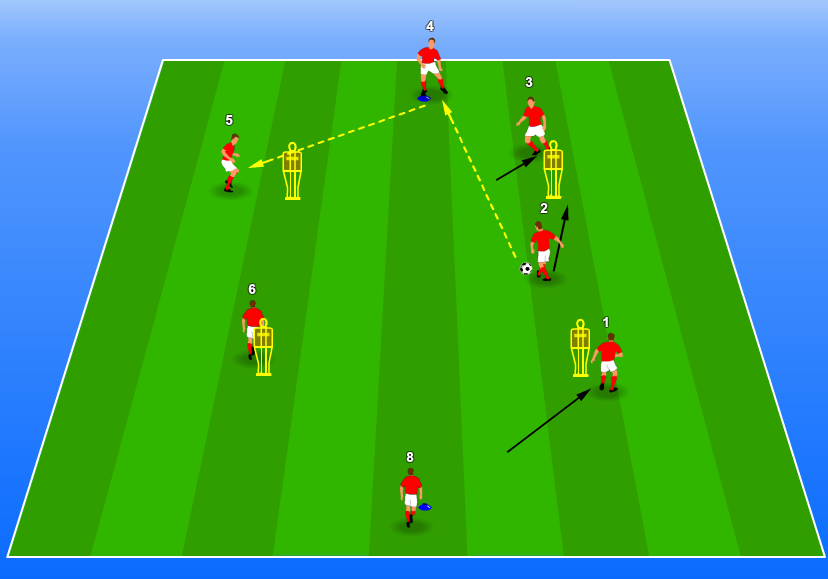
As the passes are being played, each player will rotate round to the next pole or cone.
DRILL #2
Set-up:
The same as Drill #1 (but with an increased distance that is appropriate to your player’s skill level)
Description:
This is a similar type of passing drill to the previous exercise.
- Player 1 passes to player 2 (who has checked away from their marker.
- Player 2 returns the ball to player 1 their first touch and will already begin their run to support player 3.
- Player 1 can take two touches to pass the ball to player 3 who has stepped in front of his or her marker.
- Player 3 plays a one-touch pass to the supporting player (player 2).
- Player 2 passes the ball to player 4.
- The cycle is repeated on the opposite side.


The rotation of the players is shown in the image below.
DRILL #3
Set-up
This is a simple set-up that only requires two cones and 2 discs or 4 cones. Place the cones and flat discs in a diamond formation.
Description:
- Players 1 and 2 play a one-two pass
- Player 2 must then quickly move to the side of one of the two cones, scanning as he or she does this, with the body half turned.
- Player one passes the ball to player 2.
- Player 2 receives the ball, on the half-turn, with the back foot and then plays the ball to player 3.
- Player 1 will then sprint to be in between the two cones whilst player 2 will join the line where player 3 is situated.
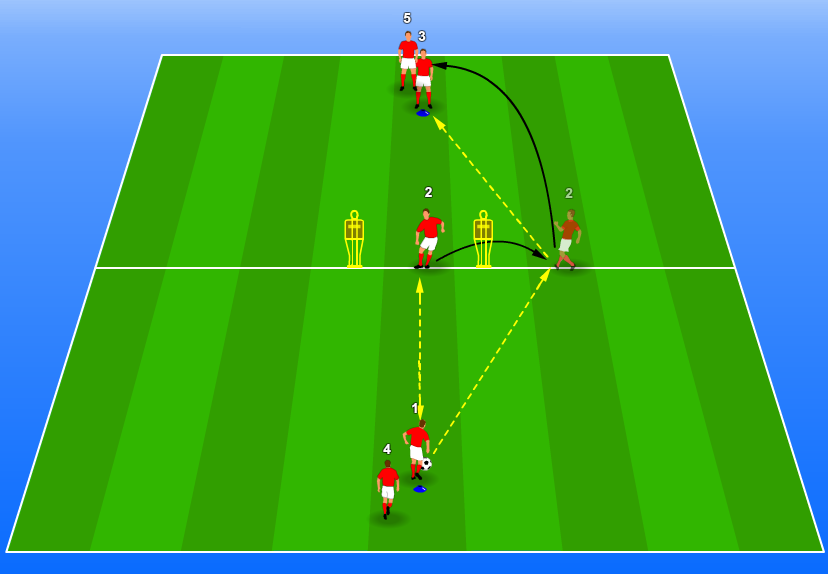
The sequence of passes continues, starting from the opposite side.
DRILL #4
Set-up
- Three mannequins or poles
- Four cones
Obviously, as with all the soccer passing drills, you can use whatever equipment that you have at your disposal.
Description:
- In this passing drill, we begin with player 1 making a pass to player 2, who then returns the ball to player 1.
- As the ball is being played back to player 1, he/she must move slightly ahead of the mannequin to play a pass around the corner.
- The round the corner pass is aimed at the target player (player 3).
- Player 1 must follow the pass to offer support dor the target player.
- As the target player receives the ball. he/she will play the way they are facing, into player 1.
- Now player 1 will play a forward ball into the running path of player 3.
- Player 3 will then play into player 4, who has checked away from the mannequin to create space to receive the ball, and the play repeats itself, starting from the other side.
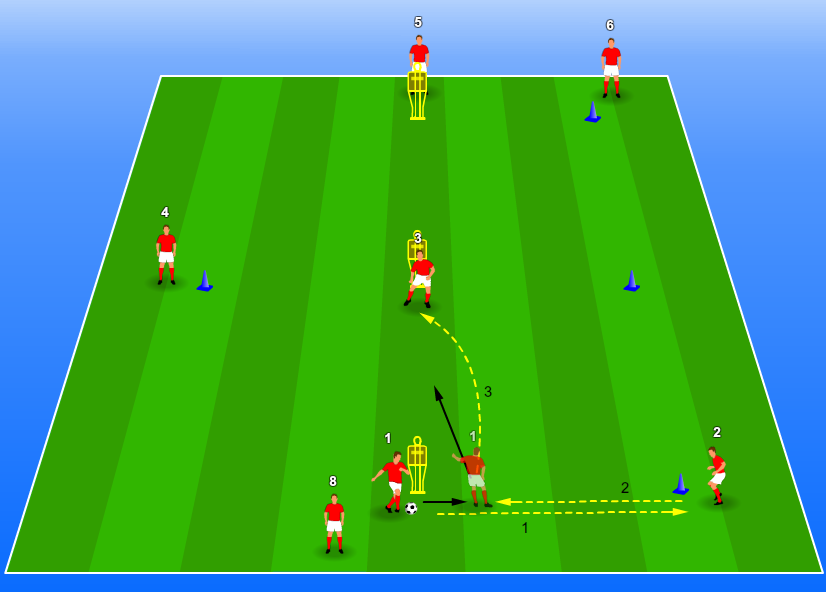
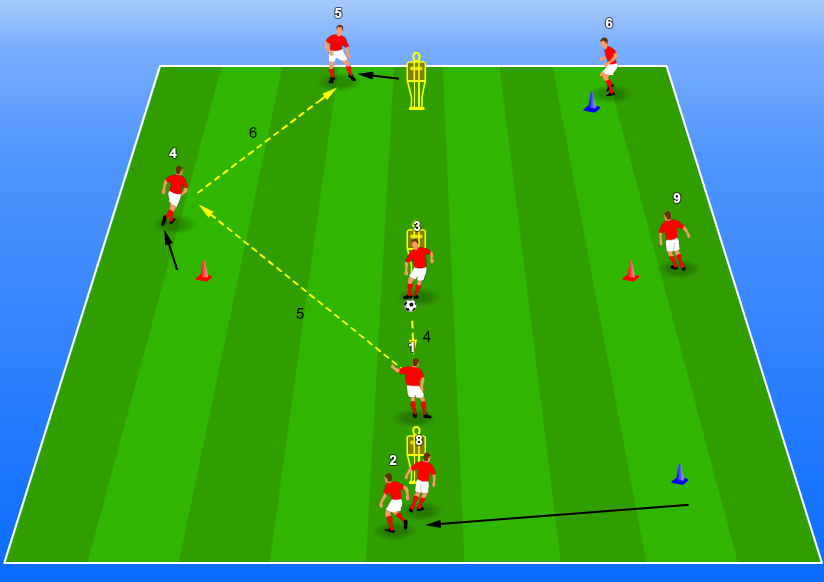
It is recommended to use two touches but the target player might be encouraged to play one touch.
After some time, switch the two blue cones to opposite sides and repeat the drill.
Coaching points
Key coaching points that you might want to teach players during these, or any other soccer passing drills will include some or all of the following points:
- Creating space through checking away from the player’s marker
- Demanding the ball
- Correct body position
- Player movement
- Timing of runs and movements
- Use the correct foot
- Proper weight of pass
- To pass the ball accurately
- Play quickly
There are a few things that coaches can do to help players develop when using passing combination drills, which may include:
- Patience
- Clear instructions
- Progress the passing drill
PATIENCE
When players start to practice these types of drills, depending on their skill level, some players might need time to get into the rhythm and speed of the exercise.
Be patient and let them make lots of mistakes at the beginning.
After a couple of minutes, start with highlighting one of the mistakes and correct it.
Maybe you want to mention a particular key coaching point.
When you start to observe an improvement, pick on another aspect and keep repeating this process and I guarantee that you will see the players pass the ball with more speed and fewer mistakes.
CLEAR INSTRUCTIONS
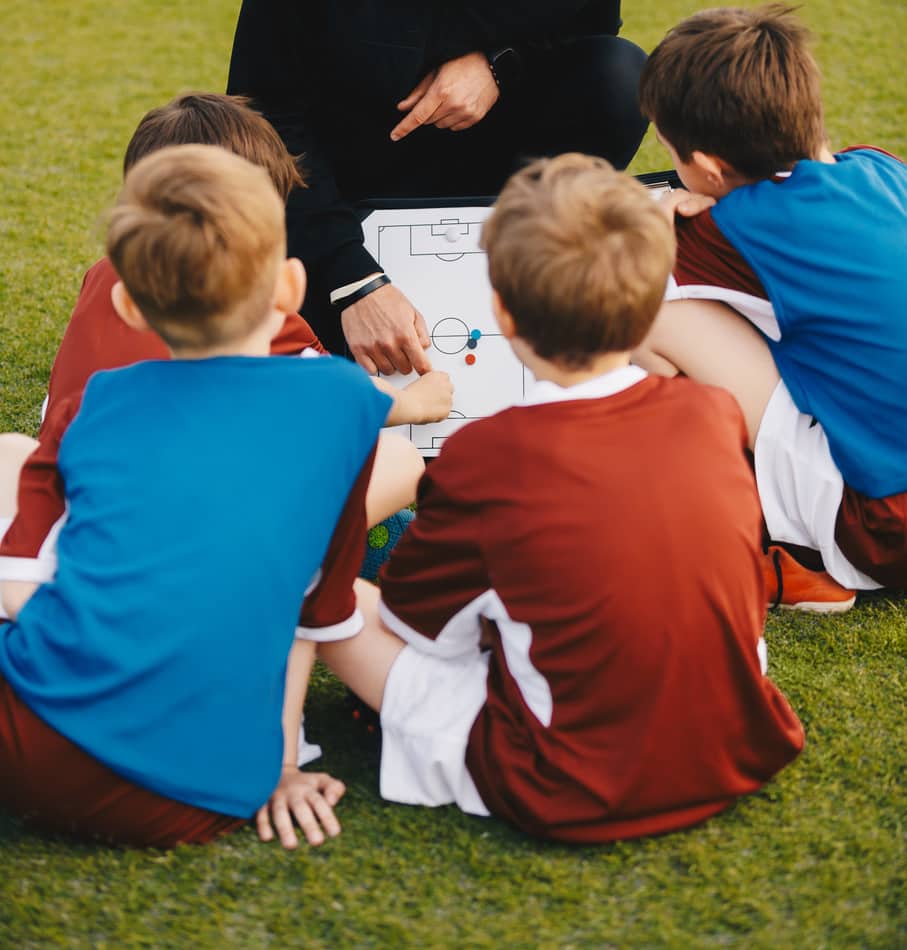
In any practice session, we must give the players clear messages so that the players fully understand what they are trying to do and how they can execute it.
These instructions might be such things as:
- Use a driven pass
- Correct passing foot
- Correct foot to control the ball
- Passing direction
- Player rotation
PROGRESS THE DRILL
When players can easily perform the passing drill with ease and, or, has become a little repetitive, adding a progression can be an extra challenge for the team.
Depending on the age and skill level, add an appropriate passing variation to maintain the level of focus or add a shot at goal.
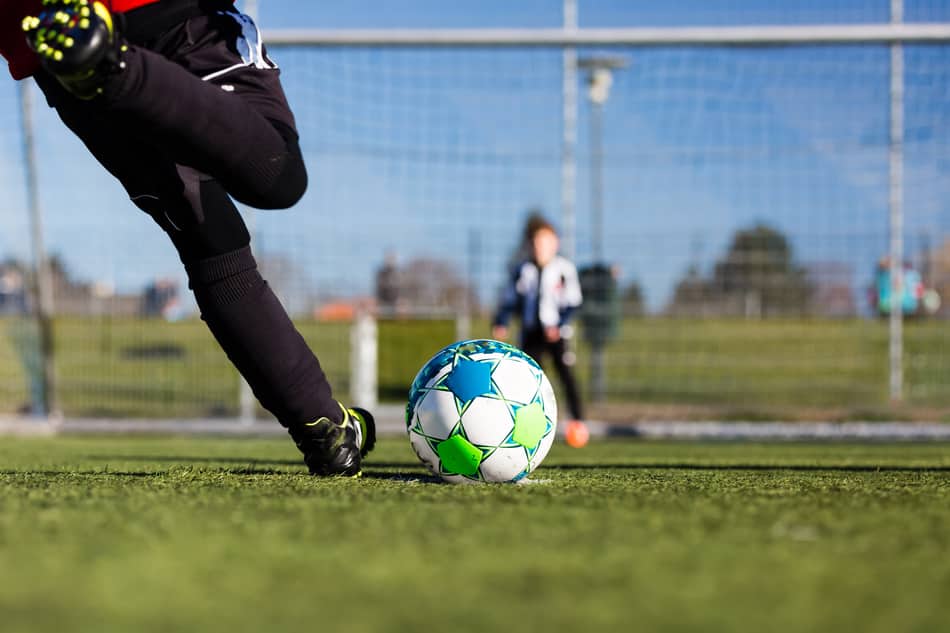
Having a shot at goal can add that extra bit of motivation for players!
There are loads of different passing drills that you can use depending on what you want to work on.
If you’re looking for some new ideas, be sure to check out the passing combination page to find more variations.
Thanks for reading!
